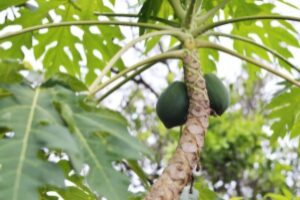
The Importance of Tree Pruning for Healthy Growth
The proper pruning of trees helps improve the health and structural integrity of a tree. It removes dead, dying, diseased, codominant and crossing limbs that reduce the strength of the tree as a whole.
When pruning large limbs, make a three-point cut to avoid tearing or ripping the bark and reducing the risk of decay. Also, remember to disinfect your pruning tools between each use with rubbing alcohol.
It Enhances the Appearance of the Tree
When a tree is pruned properly, it enhances its aesthetic appearance. This is because removing dead or damaged branches promotes new growth and keeps the entire tree healthy. It also removes limbs that hang too low or touch the ground, which may cause damage to the trunk.
Pruning, especially when carried out by professional services like Grand Rapids Tree Service, allows for better air circulation. This can reduce conditions that are conducive to diseases and pests, promoting overall tree health. It can even prevent limbs from falling during storms, protecting your house and family from injury or property damage.
Additionally, pruning, as done by experienced Grand Rapids Tree Service providers, can help improve the penetration of sunlight to grass, plants, and shrubs growing below the tree. This is important because it ensures that these plants receive enough nutrients to thrive. It can also help reduce weeds, which can compete with the plant for moisture and light. Proper pruning, with the expertise of Grand Rapids Tree Service, plays a crucial role in maintaining the well-being and aesthetics of your trees and the surrounding landscape.
It Prevents Damage to the Trunk
While pruning is often done for aesthetic purposes, it also improves a tree’s health. By removing dead, dying, broken, or weak in structure limbs, it promotes healthy growth and prevents decay and insect infestations.
It removes limbs that hang too close to homes or other structures, and it prevents the deterioration of the trunk through repeated stress. It can also reduce the risk of damage from strong winds and severe weather conditions.
Regular pruning helps trees grow faster by allowing sunlight to penetrate the canopy. It also prevents the buildup of stagnant water, which can attract and breed insects and other pests. It is important to always prune back to a bud, lateral branch, or the trunk to avoid leaving stubs that are more susceptible to infection.
It Increases Fruit Production
Trees grow wildly in forests where they are free to do so, but they must be trimmed back so that they do not damage house siding or reach into windows. In addition, branches that are overgrown or crooked are prone to fall during storms, possibly injuring people and damaging cars and property.
The proper pruning of a fruit tree will promote new growth in the correct direction and reduce crowding, both of which improves harvestability (height and position of fruit) and improves disease resistance. Additionally, removing dead limbs allows the remaining limbs to devote more energy into developing fruit buds. Without pruning, these buds will take a long time to bear fruit, if at all. This is especially true for stone fruits such as peaches and cherries.
It Prevents Pests and Diseases
Branches that are dead, diseased or damaged can drain the tree of its resources by diverting energy away from healthy limbs. Pruning removes these unhealthy limbs, freeing up the tree’s resources and promoting new growth. This also helps the other trees, shrubs and plants in your landscape by allowing them access to more sun, water and air.
Proper pruning also prevents pests and diseases, such as oak wilt, by reducing the number of branches touching the ground or other limbs. When this occurs, it allows for the spread of disease from one limb to another and can cause the entire tree to fail later. This also reduces the risk of damage during storms or high winds. Proper pruning can also help promote the development of strong, solid limbs.
It Promotes Safety
Pruning can help prevent pests and diseases by removing dead limbs. It also helps keep the crown open to allow air and sunlight to circulate. This can reduce the risk of damage caused by heavy winds and other natural hazards.
Overgrown branches can be a hazard to people and property, especially during storms. They can rub against the siding of a house or even fall onto cars and roofs. They can also pose fire hazards close to buildings or power lines.
Keeping your trees pruned regularly can improve safety for pedestrians, drivers and animals. It can also increase the life of the tree and encourage new growth. The most common pruning techniques are crown thinning, crown raising, and crown reduction. These procedures remove dead, diseased, codominant, and crossing limbs from the crown of a tree.